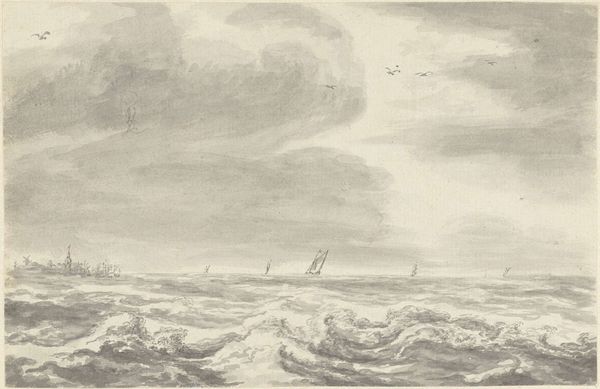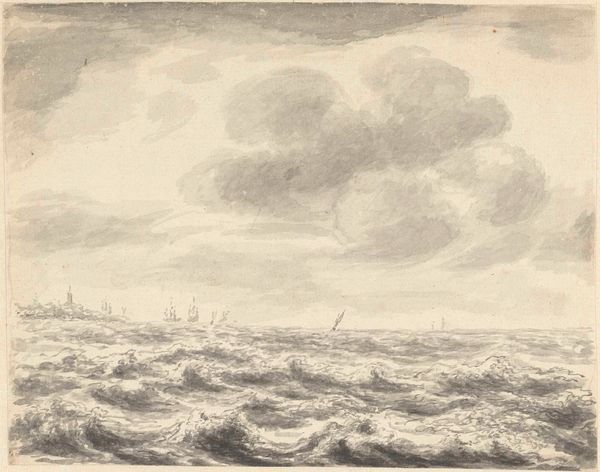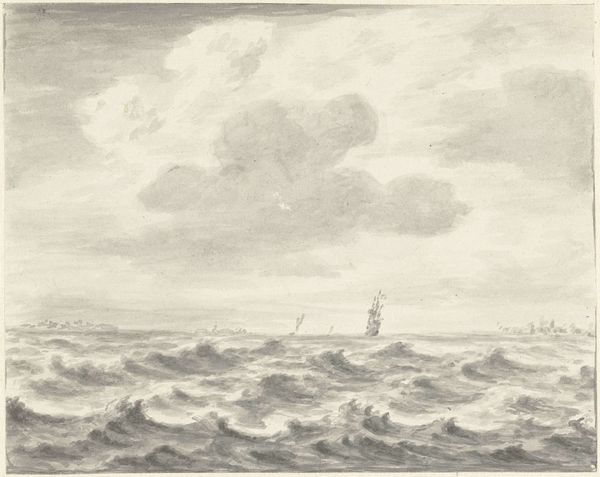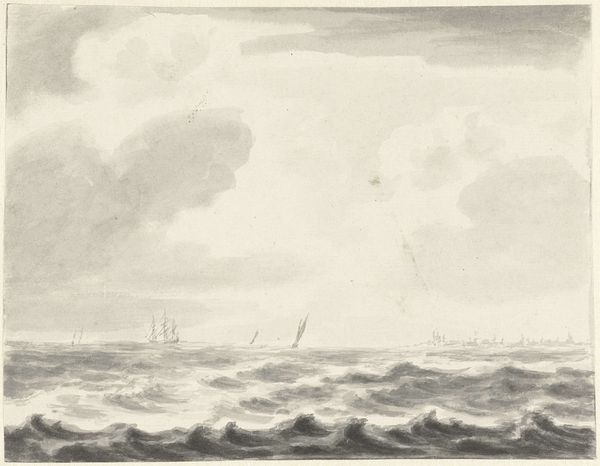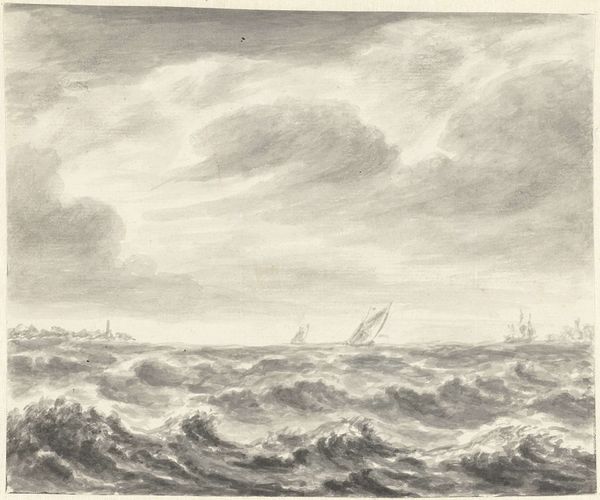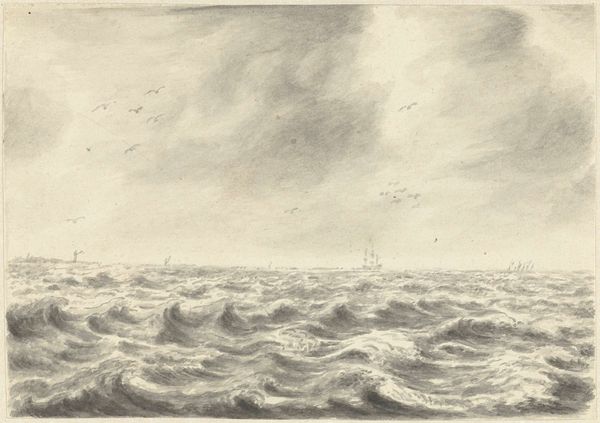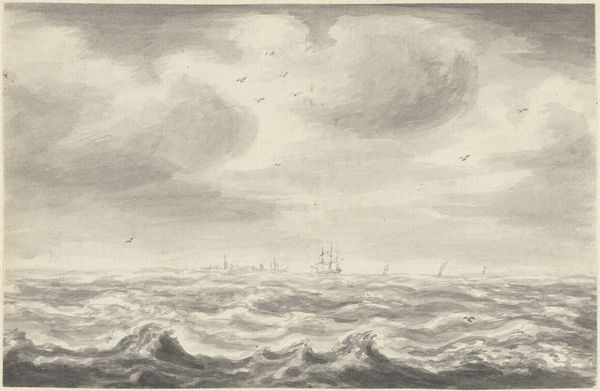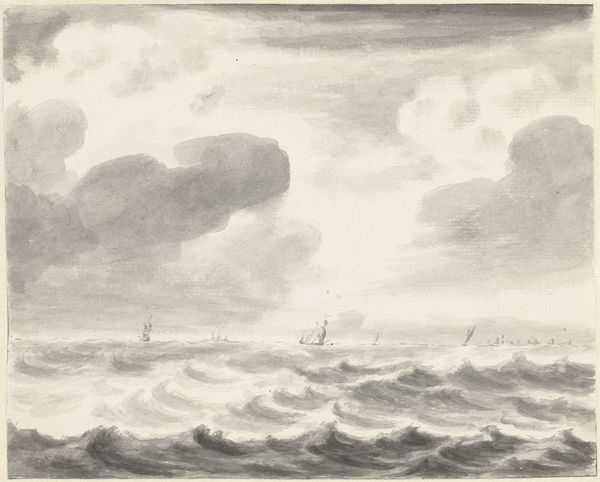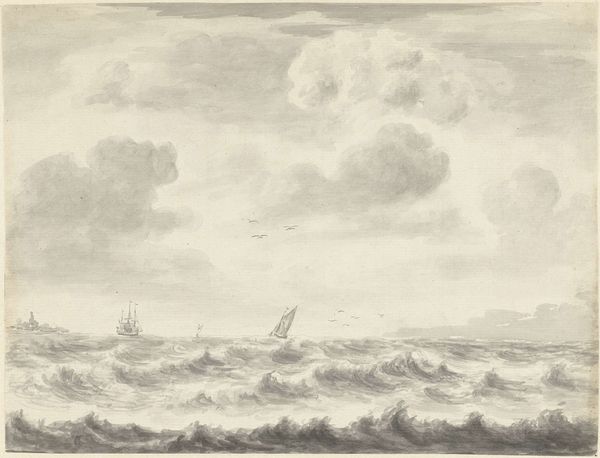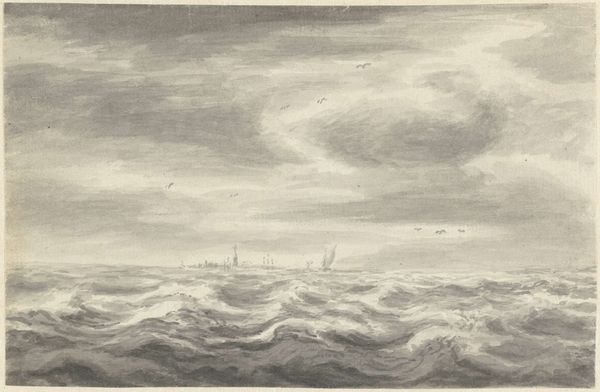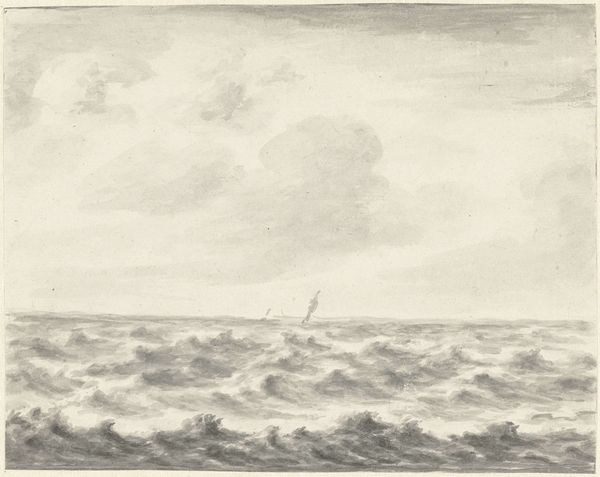
Dimensions: height 123 mm, width 190 mm
Copyright: Rijks Museum: Open Domain
Editor: Here we have "Zeegezicht," or "Seascape," created with pencil as a drawing medium by Pieter Idserts between 1708 and 1781. It evokes a sense of maritime power and vulnerability. What story does this piece tell you? Curator: Immediately, I'm struck by the composition. The turbulent sea almost overwhelms the delicate ships and distant coastline. Think about the context: the 18th century saw immense naval power struggles and burgeoning colonial trade, built on exploited labor and resources. How does the artist, through rendering this scene, comment on this socio-political landscape? Editor: So, you’re saying it might be more than just a pretty seascape? Maybe it's a commentary on empire and power? Curator: Precisely. Consider also the artistic style. Romanticism often emphasized the sublime power of nature versus human fragility. Idserts captures this, but perhaps with a critical eye. Are the ships symbols of progress and exploration, or instruments of oppression and exploitation? The visual beauty masks a complex reality. What about the absence of vibrant color? Editor: That's interesting! The grayscale adds to the solemn mood. It makes me think of faded memories, maybe of battles lost or voyages gone wrong. It’s interesting to link the formal choices to the potential political meaning. Curator: Exactly! How do the flock of birds figure into this narrative of freedom versus entrapment? Editor: That’s really broadened my perspective. It is about more than boats in the ocean; it’s about trade, power, and exploitation. Curator: Indeed, engaging with art means acknowledging the layered narratives—the personal, the historical, the political. Editor: I’ll definitely look at seascapes differently now.
Comments
No comments
Be the first to comment and join the conversation on the ultimate creative platform.

